How to Store a Lawn Mower In a Garage or Shed: 6 Tips & Tricks
-
Pete Ortiz
- Last updated:
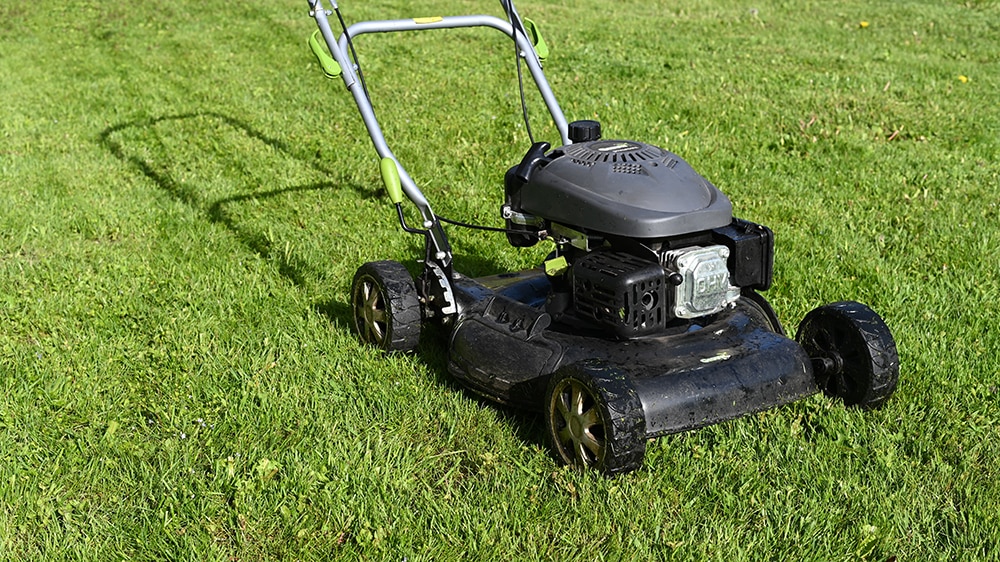
Lawn mowers come in different shapes and sizes, have varying levels of automation, and are easy to handle. However, most people are unaware of how to store them properly.
Storing your lawn mower correctly extends its lifespan and prevents it from mechanical damage. This article will walk you through the tips and tricks for correctly storing your lawn mower. Let’s dive in!
The 6 Tips & Tricks on How to Correctly Store Your Lawn Mower
Storing your lawn mower highly depends on your area’s weather conditions. The storage conditions for winter and summer differ, especially when dealing with a gas-powered lawn mower.
You can, however, protect your mower by tending to the fuel system as this reduces the chances of it getting damaged, especially during the summer months. Other storage steps that you can take when storing your lawn mower include:
1. Draining the Gas
If your lawn mower uses gasoline, the first step should be draining all the fuel or stabilizing it. This is often easier and the most effective method, especially if you live in a cold place. After about a month or two, the fuel in the lawn mower starts to degrade and can ruin the carburetor and tank.
Draining the fuel also reduces the fire risk in the storage unit. Between 2009 and 2011, the US reported 6,600 garage fires that caused 30 deaths.
To drain the gas properly, allow the tank to run dry when finishing your mowing process. If there is any remaining fuel, siphon it out. Then, run the mower until it stops and doesn’t restart again.
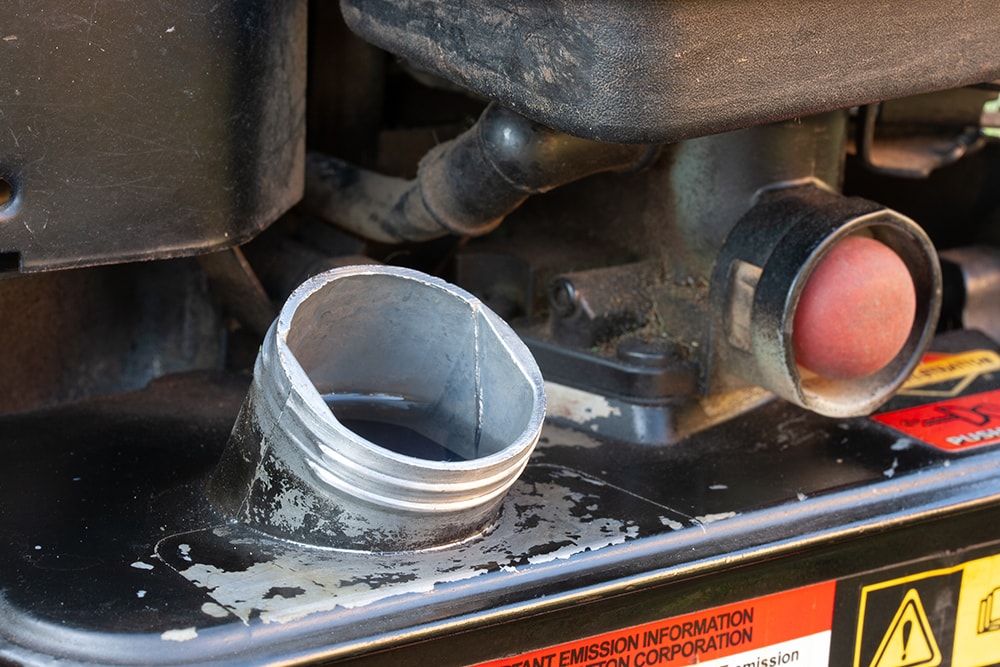
2. Stabilizing the Fuel
Gasoline typically degrades after around 30 days, leading to your engine clogging if it goes unchecked. To avoid engine damage, you should use a fuel stabilizer to eliminate the need to drain all the gas from the tank.
An example of a fuel stabilizer is the STA-BIL fuel stabilizer. To use it properly, add it to the tank before filling it with fuel. Run your lawn mower for a few minutes before storing it to ensure that the stabilized fuel circulates properly throughout the fuel tank.
3. Removing the Battery
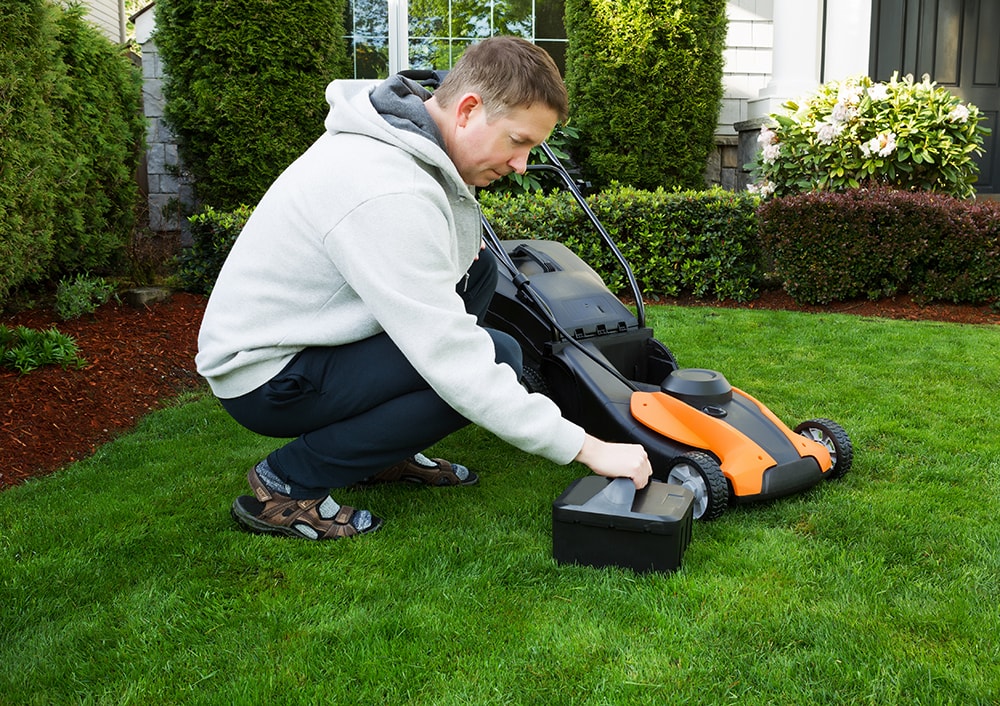
Cordless lawnmowers have become increasingly popular, mainly because you are not restricted to the area you can mow. Most of them are powered by one or two detachable batteries, and keeping them in good condition is critical since they can be expensive to replace.
Removing the battery is essential, especially if you plan on cleaning the lawn mower before storing it. Batteries should not be stored in adverse conditions such as basements or outdoor sheds. Instead, store the battery separate from the lawn mower in a cool, dry place.
4. Cleaning

The underside of your lawn mower collects a lot of dirt and grime. If the mud and grass are left on the lawn mower, this can accelerate the rusting process. To clean it correctly, use a stiff-bristled brush. Also, ensure that you remove the blades and clean them before reattaching them.
You should also switch it off before cleaning and avoid using your hand to clean it. This could result in injuries that may cause a severe infection, especially if the blades are rusted.
5. Cover It With a Tarp
Whether you plan on storing your lawn mower in an outdoor shed, garage, or basement, it’s a great idea to cover it with a tarp. Doing so ensures that it does not get covered in dust and prevents small animals from biting and damaging the cords.
Covering with a tarp protects your lawn mower from extreme weather elements such as cold, rain, and sunlight.
6. Pick the Right Storage Spot
Every lawn mower is different, and most of them come with the storage specifications in the manual. The best option is to store your lawn mower in a well-made shed or garage for security. Outdoor garages are the best option compared to the basement since they minimize the amount of dirt getting into your home.
Avoid storing it in a damp area, such as wooden sheds, since they offer minimal protection against moisture and frost in the winter months. Also, ensure your lawn mower is not stored next to any gadgets prone to overheating since this may pose a fire hazard.
The Perfect Shed for a Lawn Mower
A lawn mower is a significant investment, and its proper storage is crucial in extending its lifespan.
Your lawn mower shed should be:
1. Durable
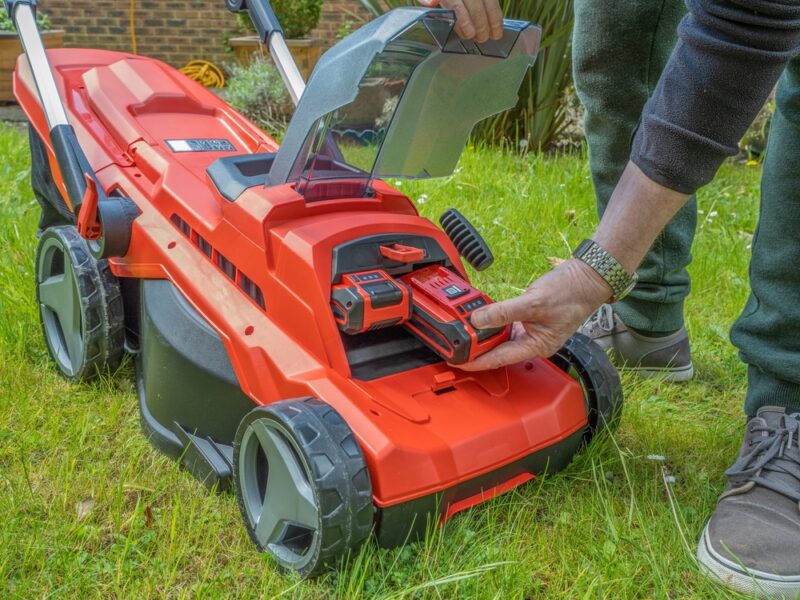
You can have your lawn mower for 15–20 years. Therefore, the shed you build for your lawn mower should be capable of lasting as long. The last thing you want is to rebuild the shed every 2–3 years or worse, having it collapse on the lawn mower.
While some owners choose to cut corners and use cheap materials when building the shed, it often costs them in the long run. The best materials are steel sheets, diamond-plated sheets, plywood, and aluminum.
2. Stable and Flat
Always store your lawn mower on a stable, flat surface to prevent it from rolling off and bumping into anything. This also ensures that the stabilizer fuel does not move around inside the fuel tank.
3. Well Aerated
If your lawn mower uses gasoline to run, you should have vents in your shed. They allow the fumes generated to escape and offer proper ventilation. If you also plan on storing other machinery in the same storage unit, then this is highly essential.
4. Have a Sloped Platform
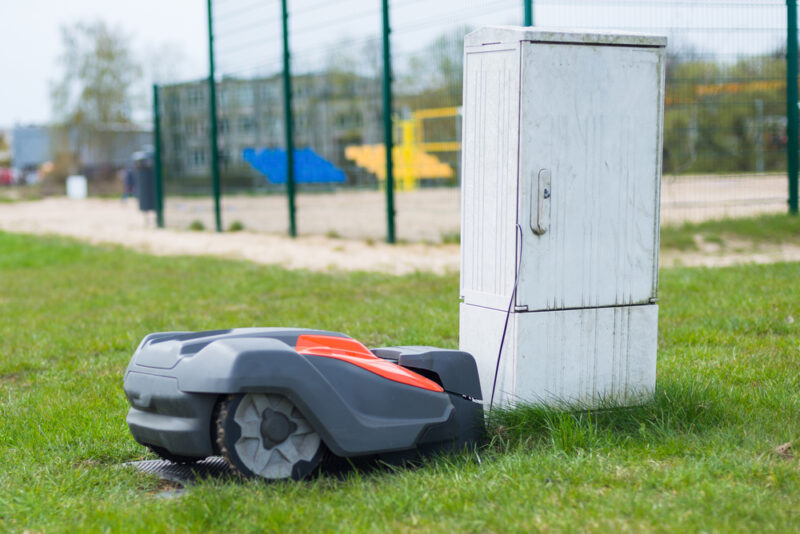
If you own a heavy or bulky lawn mower, you might want to optimize your shed to make it easy to retrieve. In addition, installing a sloped platform at the entrance is essential, especially if you use it often. Although building a ramp takes a bit more room and extra materials, it’s worth all the work and expenses that go into it.
5. Enough Storage Space
The chances are that your lawn mower is not the only thing you are storing in your shed. If you store other machinery or building tools, ensure that it is big enough to accommodate all of them comfortably.
Choosing a shed with enough storage space ensures that the equipment and other machinery do not bump against each other.
What To Avoid When Storing Your Lawn Mower
You already know how to store a lawn mower, but what should you avoid for efficient storage?
1. Leaving it Uncovered
If you insist on storing your lawn mower outdoors, ensure you have a well-constructed shed, tarp, or canopy to offer adequate shelter from the elements. Leaving your lawn mower in an open space could expose it to water which might cause water damage, thus permanently ruining it. It also accelerates the rusting process, making the blades less sharp.
2. Storing It Inside the House
Unless you have an indoor garage or basement to store your lawn mower, it’s strongly advisable to avoid storing it inside your house. It could be disastrous if small children or pets are in the home.
Lawn mowers cause around 85,000 injuries annually in the US, 70 of which are fatal. The blades mainly cause massive cuts, while the cords are trip risks when stored inside the house.
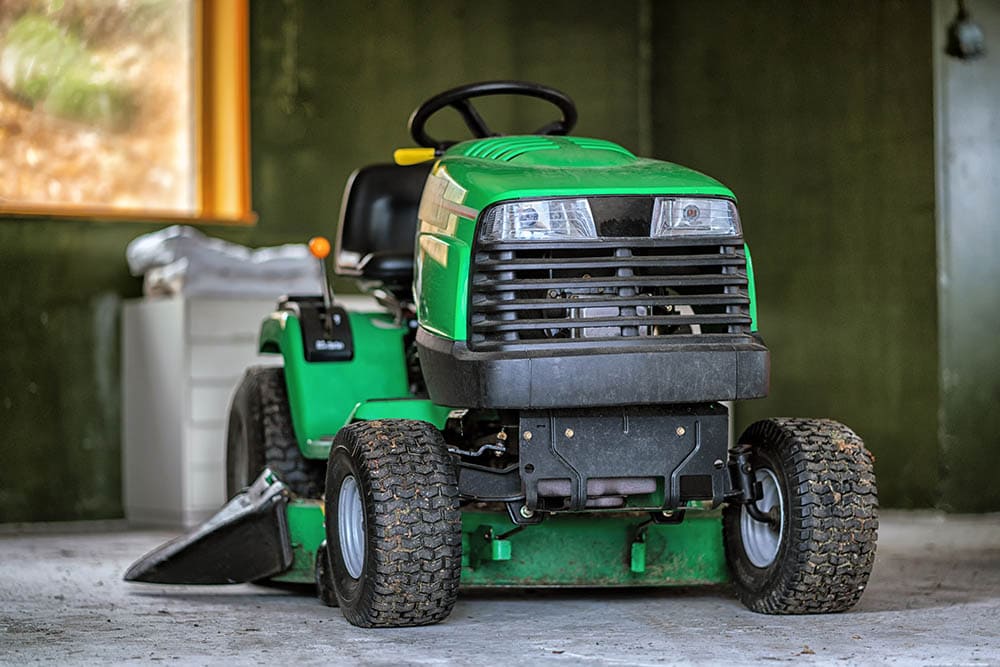
Common Questions on Lawn Mower Storage
What Are the Optimum Basement Conditions for Storing Your Lawn Mower?
While storing your lawn mower in your basement is not the best option, it is safe to do so when the conditions below are met.
- Ensuring all the windows in the basement are open for ventilation as often as possible.
- Ensuring the basement is not moist.
- Keeping the door to the basement locked to discourage kids and pets from gaining access to the lawn mower.
- Avoid running the lawn mower in your basement to prevent an accumulation of fumes.
- Avoid storing gasoline in the basement.
What Is the Best Way to Store Your Lawn Mower?
The perfect place to store your lawn mower is in a cool and dry place with adequate security. Avoid storing next to any heat source to prevent a fire outbreak.
Bottom Line
The average price of a lawn mower is $1,068, which shows how pricey it can get. So, to extend its lifespan, store your lawn mower correctly and avoid some of the common mistakes made during storage.
Featured Image Credit: Andres Siimon, Unsplash
Contents


